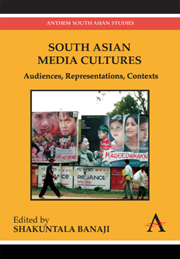Book contents
- Frontmatter
- Contents
- List of Illustrations
- 1 Introduction
- Part One Elaborating Audiences: Meaning, Use and Social Context
- Part Two Telling Texts: Media Discourse, Identity and Politics
- Part Three Alternative Producers: The Articulation of (New) Media, Politics and Civic Participation
- 11 Through the Lens of a ‘Branded Criminal’: The Politics of Marginal Cinema in India
- 12 Pakistani Students' Uses of New Media to Construct a Narrative of Dissent
- 13 Expanding the Art of the Possible: Leveraging Citizen Journalism and User Generated Content (USG) for Peace in Sri Lanka
- 14 Conclusion
- List of Contributors
14 - Conclusion
from Part Three - Alternative Producers: The Articulation of (New) Media, Politics and Civic Participation
Published online by Cambridge University Press: 05 March 2012
- Frontmatter
- Contents
- List of Illustrations
- 1 Introduction
- Part One Elaborating Audiences: Meaning, Use and Social Context
- Part Two Telling Texts: Media Discourse, Identity and Politics
- Part Three Alternative Producers: The Articulation of (New) Media, Politics and Civic Participation
- 11 Through the Lens of a ‘Branded Criminal’: The Politics of Marginal Cinema in India
- 12 Pakistani Students' Uses of New Media to Construct a Narrative of Dissent
- 13 Expanding the Art of the Possible: Leveraging Citizen Journalism and User Generated Content (USG) for Peace in Sri Lanka
- 14 Conclusion
- List of Contributors
Summary
Jump Cuts and Unusual Angles
In looking across histories, national borders, urban and rural regions, social classes, genders, ethnicities, cultural practices and political traditions in the South Asian region to give a sense of the contexts in which media producers and audiences make meaning and texts are formed and used, the contributors in this volume have not taken a uniform approach. Herein lies the richness of this collection, but also the difficulty in drawing conclusions that are in agreement with all chapters' findings and orientations. I do not, therefore, intend to restate the complex findings of individual chapters but simply to draw out common theoretical strands, questions and absences.
Reading through the collection, it becomes apparent that the South Asian audience, singular, does not exist. Nor does the Indian or the Sri Lankan audience. Nor does the child audience or the rural audience, per se. There is also no overarching, publicly funded, government-controlled national media framework in any of the countries that has not, by 2009, been compelled to interact with and cede much of its market to local and international commercial media interests. Nevertheless, all the variety of media interests in each of the countries included in this collection clearly operate within and against the backdrop of the existing cultural ideologies of various civil society actors and national, regional or state political regimes. There can be no doubt, therefore, about the very political nature of the processes surrounding and inflecting all production and consumption of media across the subcontinent.
- Type
- Chapter
- Information
- South Asian Media CulturesAudiences, Representations, Contexts, pp. 255 - 262Publisher: Anthem PressPrint publication year: 2010



